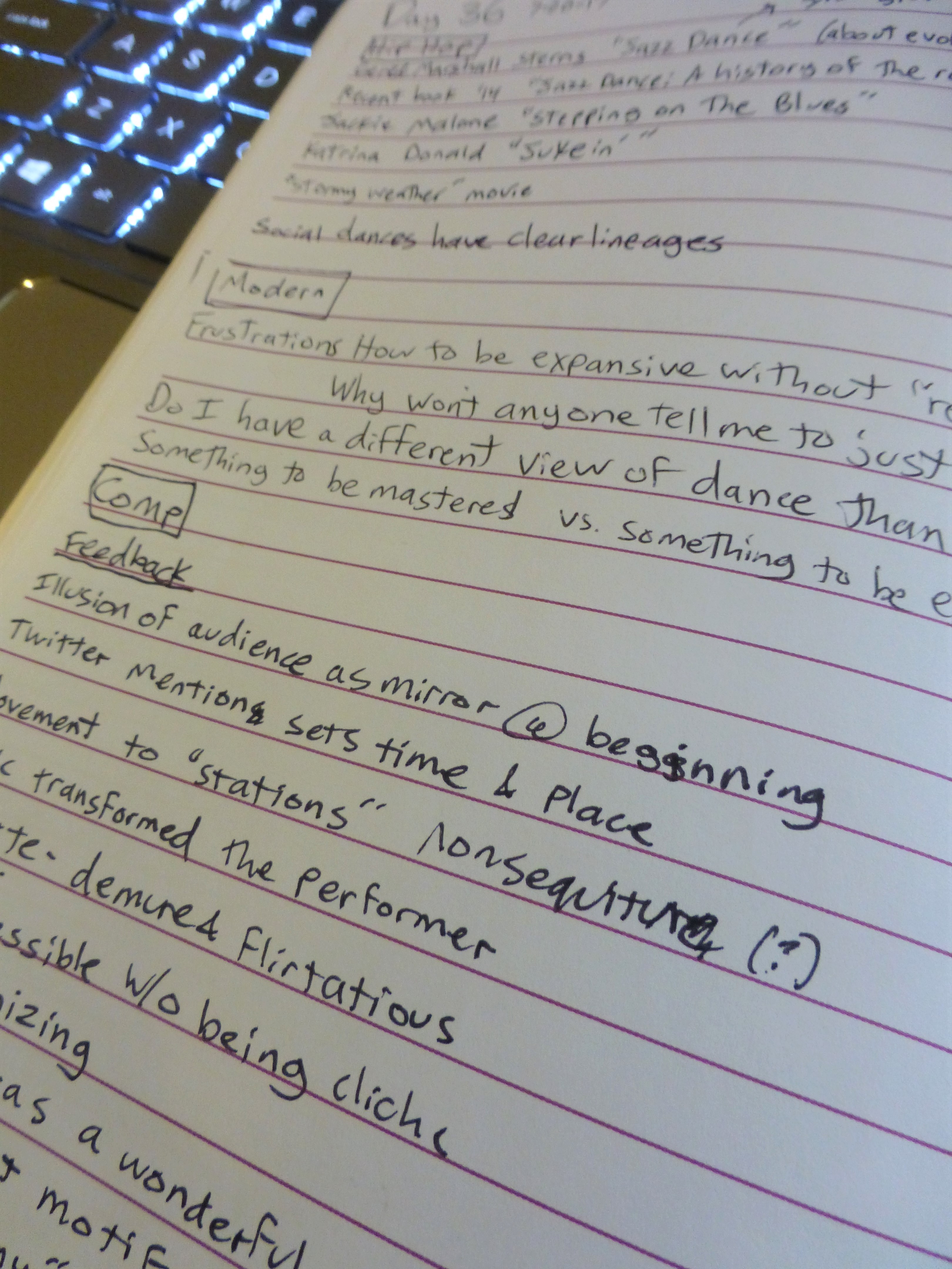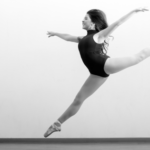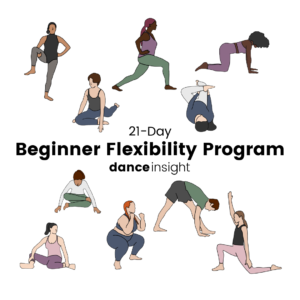
How to Keep a Dance Journal
I’ve always loved the idea of keeping a dance journal. Not only would it be a great way to remember my corrections and all the things I learn in class, but it would also be a fun thing to look back on and see what I was working on years ago. However, maintaining a journal of any kind is easier said than done. Once you skip a day it becomes easier and easier to slack off, and sometimes you just don’t have time. If you struggle with this, too, read on to hear my tips for starting and maintaining a dance journal.
What You Need
- Lightweight journal that will fit in your dance bag
- Bring it to every dance class, workshop, audition, or show you attend!
- Find a cover design you love. If you love looking at it, you’ve going to be more inclined to write in it.
- Don’t spend a lot of money, because you’ll run out of pages before you know it and have to buy a new one!
- A pen or pencil
- This bugs the heck out of some people (including me a little bit), but it really helps to be okay with having some entries in pencil and some entries in pen. You want to be able to grab whatever’s on hand and write down your thoughts quickly.
- Find some way to attach the pen or pencil to your journal so you never lose it. I love clipping a mechanical pencil to the rings on a spiral-bound notebook. Alternatively, you could dedicate a pocket in your dance bag to keeping a stash of pens and pencils.

Some journals I recommend:



Find What Works For You
To be successful in keeping a dance journal, you need to create a system for yourself. Your system will include 1) what you write down, 2) when you write it down, and 3) how you motivate yourself to keep going. Finding what works for you will be a long process of trial and error, so don’t feel like you have to come up with the perfect system before you even start. Just try something, and if it doesn’t work, try something else.
Tip #1: Allow your method to evolve.
Just because you started with a certain layout or method doesn’t mean you need to stick with it. Maybe you thought writing down “goals for next class” would be a good idea, but it’s turning out to be more trouble than it’s worth. Stop doing it! It’s okay to reevaluate and try something new halfway through a journal (or 3 pages in).
Tip #2: Keep it simple.
It would be nice to have a Pinterest-worthy, bullet-journal-style layout every day, but you ain’t got time for that! You need a space where you can scribble some notes during your five minute break between classes while you’re simultaneously eating a granola bar and putting pointe shoes on. My journal from the American Dance Festival looks like this:

It’s just words thrown on a page, because that’s all it needs to be.
Things to Consider Including
My goal for dance journaling is to write at least one thing for every class I take. But what if I didn’t get any corrections and the teacher didn’t give any helpful feedback? Here is a list of things you might want to include in a class record:
- The date, what class it is, and the teacher’s name
- Any corrections you got (put a star by these so they’re easy to find later!)
- General advice that the teacher gave the class
- What you worked on (great option if you have nothing else to write)
- Successes (i.e. “Finally got my double pirouette today!”)
- Frustrations (i.e. “I really wish I could pick up combinations faster.”)
Sometimes all I write down for a class is a list of frustrations, because that’s how I felt that day. Other days I might write, “Basically the same class as last week.” All that matters is that you write something.
Tip #3: Keep Reference Lists at the Back of the Journal
You might want to keep some running lists in your dance journal, such as “Helpful Stretches,” “Awesome Songs,” or “Funny Things My Teachers Say.” Where in your journal do those lists go? My instinct was always to put them at the front, but the problem with that is that you might want to add a list at a later time.
Here’s my solution: put your first list on the very back page of the journal. As you add more lists (or doodles, rants, whatever), work backwards from that back page. Eventually your class records, which are working forwards from the front, and your lists, which are working backwards from the back, will meet, and it’ll be time to start a new journal.
A Few List Ideas
- Helpful stretches and strengthening exercises
- Things to look up: people, companies, history, videos, etc.
- Funny and inspirational quotes
- Things to work on
- Short-term and long-term goals
- Favorite songs to dance to
- Wishlist
- Show/competition checklist
- Encouraging things people say to you
Sticking With It
These tips have helped me write more consistently in my dance journal, to the point that now it doesn’t feel like I’ve finished class until I jot a few notes down. That’s how you know something’s become a habit: when not doing it feels wrong. Try out these tips for yourself and see if they work for you!
Tip #4: Don’t write about Class B until you’ve written about Class A.
If you’re taking 2 classes in a row, you have to write about them in order. You’re not allowed to say, “Meh, Class A didn’t do much for me, so I’ll write about Class B and get back to A later.” Trust me, you’ll never get back to it later. The only way you’ll ever get back to something later is if it’s Tuesday night, but you have to finish writing about Monday’s classes before you can write about today.
Writing about one class shouldn’t take more than a few minutes. If you write an essay for every class you take, it’ll get real boring real quick.
Tip #5: Make writing in your dance journal incredibly easy.
The more effort required, the less likely you are to stick with it. Forget about spelling, grammar, neat handwriting, or writing well-formed sentences. No one is going to read this but you, so you’re the only one who needs to understand it. Just scrawl some words on paper during your water break and get back to class.
I hope this was helpful, or at least gave you some ideas for how to start a dance journal. Leave a comment if you have any questions or additional tips!







